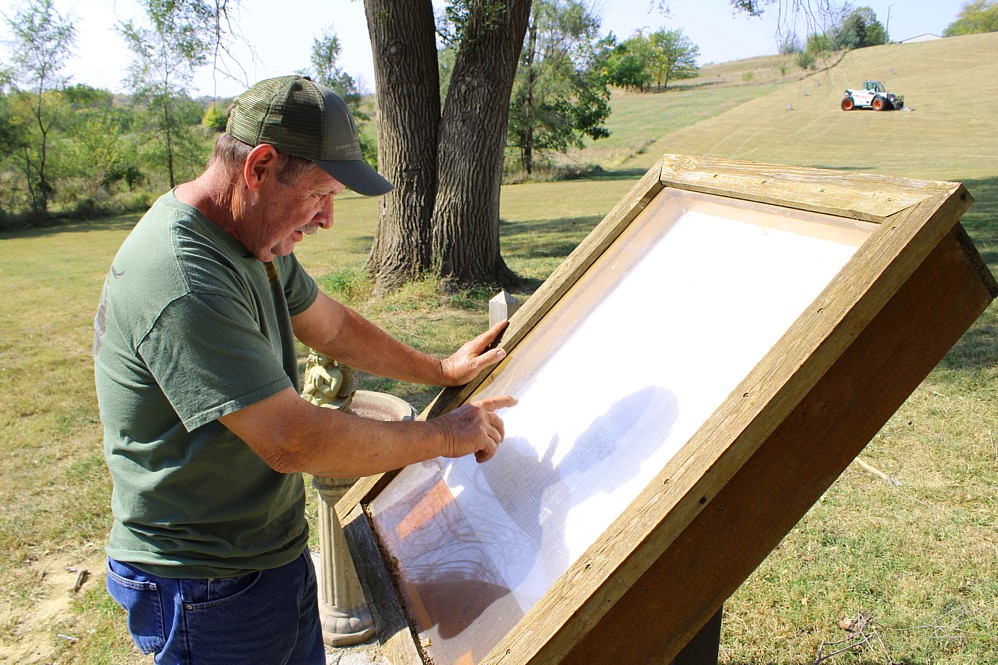After institutions for people with disabilities close, graves are at risk of being forgotten
November 18th, 2024 by Ric Hanson
GLENWOOD, Iowa — Hundreds of people who were separated from society because they had disabilities are buried in a nondescript field at the former state institution in Mills County. According to the Iowa Capital Dispatch, disability rights advocates hope Iowa will honor them by preventing the kind of neglect that has plagued similar cemeteries at other shuttered facilities around the U.S.
The Glenwood Resource Center, was closed this summer in the wake of allegations of poor care. The last of its living residents were moved elsewhere in June. But the remains of about 1,300 people will stay where they were buried on the grounds. The graveyard, which dates to the 1800s, covers several acres of sloping ground near the campus’s brick buildings. A 6-foot-tall, weathered-concrete cross stands on the hillside, providing the most visible clue to the field’s purpose. On a recent afternoon, dried grass clippings obscured row after row of small stone grave markers set flat in the ground. Most of the stones are engraved with only a first initial, a last name, and a number.
During more than a century of operation, the institution housed thousands of people with intellectual disabilities. Its population declined as society turned away from the practice of sequestering people with disabilities and mental illness in large facilities for decades at a time. The cemetery is filled with residents who died and weren’t returned to their hometowns for burial with their families. State and local leaders are working out arrangements to maintain the cemetery and the rest of the 380-acre campus. Local officials, who are expected to take control of the grounds next June, say they’ll need extensive state support for upkeep and redevelopment, especially with the town of about 5,000 people reeling from the loss of jobs at the institution.
Iowa’s Glenwood Resource Center started as a home for orphans of Civil War soldiers. It grew into a large institution for people with disabilities, many of whom lived there for decades. Its population peaked at more than 1,900 in the 1950s, then dwindled to about 150 before state officials decided to close it. Two former employees of the Glenwood facility recently raised concerns that some of the graves may be mismarked. But officials with the Iowa Department of Health and Human Services, which ran the institution, said they have extensive, accurate records and recently placed stones on three graves that were unmarked.
Spokesperson Alex Murphy wrote in an email that while no decisions have been made about the campus, the agency “remains committed to ensuring the cemetery is protected and treated with dignity and respect for those who have been laid to rest there.” Glenwood civic leaders have formed a nonprofit corporation that is negotiating with the state over development plans for the former institution. “We’re trying to make the best of a tough situation,” said Larry Winum, a local banker who serves on the new organization’s board. Tentative plans include tearing down some of the existing buildings and creating up to 900 houses and apartments.

Max Cupp, a retired supervisor of the grounds at Iowa’s Glenwood Resource Center, brushes away grass clippings so he can check a grave marker at the shuttered institution’s cemetery on Oct. 9, 2024. (Tony Leys/KFF Health News)
On a recent day, just one of the Glenwood graves had flowers on it. Retired managers of the institution said few people visit the cemetery, but amateur genealogists sometimes show up after learning that a long-forgotten ancestor was institutionalized at Glenwood and buried there.





